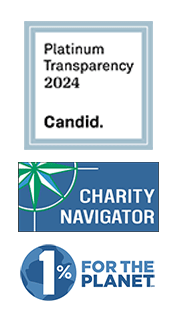Honorable Committee Members. I am Matt Prindiville, Toxics Project Director with the Natural Resources Council of Maine. The Natural Resources Council of Maine is Maine’s leading membership-supported environmental advocacy organization dedicated to protecting the nature of Maine now, and for future generations. We were the lead policy organization that worked to pass Maine’s electronic waste law in 2004, and we have been working closely with the Maine Department of Environmental Protection (DEP) and the stakeholders to ensure its successful implementation. I appear today on behalf of NRCM in support of Int. 643.
As I prepared testimony in support of this bill, I wanted to capture what would be most pertinent to today’s discussion. Given that the bill before you today would create a producer responsibility electronic waste recycling system very similar to Maine’s system – the only producer responsibility e-waste recycling system that is currently up and running in the states — I’m sure the question on your minds is how is Maine’s e-waste system working?
To start, let me describe the basic logistics of the system. You will note in my testimony that I have attached a fact sheet that explains the responsibilities of each party under the law in greater detail.
I. Logistics of Maine’s Electronic Waste Recycling System
In the Maine system, consumers take their e-waste to their town’s chosen collection facility. Each municipality decides whether it wants to operate an on-going collection center, do regular one-day collections, or have their residents deliver directly to a nearby consolidator. Towns may choose to charge a small drop-off fee for any extra costs they incur. Municipalities then pay for the delivery of residential waste televisions and computer monitors to a consolidation facility in Maine.
Consolidation facilities then count the waste household televisions and computer monitors by manufacturer; some consolidators also function as e-waste recyclers as well. Those that don’t or are only partial recyclers ship the remaining e-waste to New England e-waste recyclers. Consolidation facilities are responsible for shipping only to recyclers that provide certification of meeting Maine’s Environmentally Sound Management Guidelines (published by DEP), and for billing manufacturers for allowable costs.
Each manufacturer is responsible for paying the consolidators for the costs of handling, transportation and recycling of their own television and computer monitor products plus a pro rata share of orphan products from receipt at the consolidator through recycling.
These are the basic mechanisms of the system. Maine’s e-waste law went into effect on January 18th of this year. From that point, approved consolidation facilities have been allowed to collect and bill manufacturers for their e-waste. Most towns that previously provided e-waste disposal services for their citizens opted into the program at this point. On July 1st, 2006, a landfill disposal ban went into effect for all CRTs, which encouraged participation from nearly all other municipalities. There is a retail sales ban on non-complying manufacturers as well as a strong enforcement clause which I will discuss in greater detail later in my testimony.
II. Is Maine’s E-waste Law Working?
In order to ascertain whether Maine’s e-waste system is working, we created objectives for the program before implementation. Those objectives were to:
· Create a system of shared responsibility.
· Maximize collection of household TVs and monitors.
· Allow for collection from small businesses.
· Minimize new costs to municipalities and shift financial burden for e-waste recycling from taxpayers to manufacturers.
· And create a system that is relatively simple, clear and consistent.
Judging by these measures, I am happy to report that we have largely succeeded on all counts.
Has Maine succeeded in creating a shared responsibility system? YES.
Maine convened a long stakeholders process to develop and implement the system across a broad range of constituencies. The program has developed over the past year so that it has broad participation and compliance from the parties involved, including (as of October 1st, 2006):
· 150 manufacturers participating, covering 347 brands.
· 492 local jurisdictions being served with over 200 local collection sites.
· 5 approved consolidators.
· 3 recyclers.
· Retailer participation.
· Functional, relatively low-burden, and low-cost role for the State of Maine (Department of Environmental Protection, the State Planning Office and the Office of the Attorney General).
As far as what is happening on the ground, we’ve seen that:
· Residents are bringing units for recycling.
· Most towns have identified collection locations for residents.
· Consolidators are recording data and billing manufacturers.
· Most manufacturers are paying or taking waste for recycling.
· Retailers are implementing the sales ban on non-compliant manufacturers.
Is the program maximizing collection of household TVs and Monitors? YES.
With some community and media outreach by municipalities, DEP and NRCM, we’ve seen a large influx of e-waste moving out of Maine’s solid waste system and into the e-waste recycling system. During the first five months of the program, from January 18th to May 18th, 2006, the system collected:
· 14,068 TVs = 923,596 pounds
· And 10,540 monitors = 367,606 pounds
That’s an annualized 59,059 units each year and roughly 2.3 million pounds of e-waste collected annually. If we extrapolate that figure and factor in Maine’s 1.28 million residents, the program is collecting around 2.01 pounds of e-waste per capita annually.
This figure could fluctuate over time. The amount collected in the first five months does not include all of the municipalities that are currently being served by the program. Also, we’ve heard reports of large volumes of legacy waste, with some very old TV consoles and early PCs, entering the system during the beginning of the program. These high rates of legacy waste will likely fall over time.
Does the program allow for collection from small businesses? YES.
Currently, 74 municipal sites accept business waste and charge for this service. We anticipate that more municipal collection sites will accept business waste as DEP conducts more outreach to outlying areas.
Does the program minimize costs for municipalities and shift financial burden from consumers and municipalities to manufacturers? YES.
The program transfers much of the transportation and all of the recycling costs from municipalities to manufacturers (Some municipalities that have consolidation facilities nearby may direct residents to take e-waste to consolidators, thereby eliminating transportation and handling as well as recycling costs). This has enabled municipalities to reduce or eliminate their drop-off fees. Before the law was implemented, municipalities that were collecting e-waste and charging drop-off fees were typically charging between $15 and $25 per unit to residents.
Since the law has been implemented, many municipalities have eliminated their fees entirely and most others have reduced their drop-off fees to between $0 and $5 per unit. According to DEP, the highest drop-off fee that has been documented in the system was an $8 charge for a big-screen TV.
To determine cost savings for Maine municipalities and taxpayers, I’ve multiplied the estimated 2.3 million pounds of e-waste collected annually by the average cost per pound of Maine’s largest consolidator by volume, Uniwaste, which currently charges manufacturers 19 cents per pound of e-waste recycled. That figures out to be an annual cost savings of $437,000 for Maine towns and taxpayers.
In order to further reduce costs and streamline the system, Maine DEP has also assisted municipalities in setting up or modifying collection systems through free training and outreach. In addition, the State Planning Office has provided grants for building infrastructure.
Is the program relatively simple, clear and consistent? YES, with some areas for improvement.
As I mentioned before, Maine’s system was carefully developed over several years of a stakeholder process where the affected parties worked to create a system that makes sense for our state. Simply put, the system is working to ensure that Maine’s e-waste is recycled in an environmentally responsible manner, that manufacturers share in the costs and have an incentive to produce less toxic more easily recyclable products, and that efficiencies and economies of scale are built into the system so that the market sets costs and our state government is not overly burdened as the administration of a fee-based program would dictate.
From providing manufacturers with sample compliance plans to publishing outreach documents and conducting trainings for municipalities and consolidators, the Department has put significant resources into ensuring that the system is simple, clear and consistent.
The challenges that the system has faced have largely been start-up issues due to the program’s infancy and our implementing a system without any precedent in the states. I will highlight the key issues in the next section.
III. Challenges and Lessons Learned
Brand Responsibility and Identification
DEP has found that brand responsibility can be difficult to determine, and that there are new brands showing up in waste collections that require time and expertise to track to their manufacturer for billing. DEP is working to incorporate an importer clause which the New York bill has included to simplify the determination of responsibility for obscure brands.
Logistics, Payment and the Enforcement Clause
The first consolidation facilities that won bids in the system initially found the handling to be more complex than anticipated. There were some logistical problems associated with separating the e-waste by manufacturer for accounting purposes that have been worked out as the program developed. Several manufacturers also wanted to examine consolidation facilities and become more familiar with the program before remitting payment. Unfortunately, because of a lack of concerted action at the federal level, manufacturers have to navigate a variety of different state and local laws, and the process can be confusing. Initially, this coupled with DEP’s constant and time consuming work of identifying brand responsibility and notifying consolidators caused some delay from manufacturers in remitting payment.
The billing has been relatively straightforward and most manufacturers have been paying their bills. Trust relationships have also evolved between the consolidators and many of the large manufacturers as handling, shipping and billing systems have developed and seem to be working between them. The fact that so many manufacturers are paying their bills is testament to the system and its strong enforcement clause. However, there are several manufactures that aren’t paying their bills, and we feel it’s vital to have a strong enforcement clause to encourage compliance.
Maine added the enforcement clause in the rulemaking process. The clause stipulates that if a manufacturer fails to pay its bills including its pro-rata share of orphan waste, consolidators can petition DEP to pay the consolidator for its costs and seek cost recovery from the manufacturer. Any nonpaying manufacturer is liable to the state for costs in an amount up to three times the amount incurred as a result of the state absorbing the manufacturer’s bill.
Business versus Household E-waste
Currently the system provides for collecting business waste for a fee in seventy four of the two hundred locations collecting e-waste in state. Municipalities use their existing Universal Waste log system, but need to mark units/gaylords if they are taking business waste. Several municipal collection sites have not done a good job logging and marking business waste to distinguish from household waste. This continues to be an issue, and the City of New York avoids this problem by including business and residential e-waste together in its program.
* * *
We are more aware today than ever of the public health problems created by exposure to the toxic compounds found in electronic equipment, including lead, beryllium, mercury, cadmium, PVC and brominated flame retardants. These byproducts of the high-tech revolution are poisons if not properly managed at the end of their useful life.
I hope that my presentation has confirmed that a producer responsibility system can work well to meet the demands that environmentally-sound electronic waste recycling requires. Int. 643 will shift responsibility from the current emphasis at the waste end, back toward the front end of the product cycle. This remains the most constructive way to put the skills and resources of the manufacturers to use in ways that will reduce the burden on the City and its taxpayers. Bear in mind, that the manufacturers are the parties with control over the design, manufacturing and marketing of the electronic devices that become e-waste. Without sharing responsibility as called for in this bill, they lack direct incentives to improve recyclability and reduce the toxicity of their products. This is one area where New York City will share in the benefit of developing market-based solutions for pressing environmental problems.
Because of these reasons and the initial success of Maine’s e-waste law, NRCM urges the Committee members to vote to pass Int. 643 and initiate New York City’s solution to the e-waste problem.
I would be pleased to answer any questions you may have.
V. APPENDIX: Additional Questions and Answers
What incentive do consolidators have to keep costs down?
· DEP has set a maximum cost-per-pound ceiling of 48 cents per pound for consolidation, transportation and recycling. This amount was reached through extensive negotiation in stakeholder meetings.
· Consolidators also must be approved by DEP annually to remain in the system. They have to continually submit competitive bids, or they can have their license to operate revoked.
· All approved consolidators are charging manufacturers significantly less than the ceiling. Uniwaste, the largest consolidator by volume of e-waste handled, currently charges manufacturers approximately19 cents per pound, including all transportation, handling and recycling.
What is the orphan share for TV manufacturers?
· 1½ to 2½ %
What is the orphan share for computer manufacturers?
· 15 %
How does the system prevent the exportation of toxic e-waste?
Maine’s e-waste system is designed to prevent the exportation of toxic e-waste to developing countries. The law requires that recyclers provide consolidation facilities with a sworn statement that its handling, processing, refurbishment and recycling of computer monitors and televisions meet Environmentally Sound Management Guidelines published by Maine DEP. Consolidation facilities are responsible for shipping only to recyclers that provide certification of meeting Maine ‘s environmentally sound management guidelines. Maine DEP monitors each recycler’s operations to determine that they are in compliance. Maine DEP can decline a consolidator’s application for the program if they are working with a recycler in non-compliance with Maine’s ESM guidelines.
Of the major consolidators in operation, Uniwaste dismantles the CRTs and conducts the glass recycling on site. The remaining materials are sent to recycler in Rhode Island that breaks the remaining components into saleable commodities.
Veolia ES Technical Solutions, L.L.C. dismantles all television sets and any monitors with physical or electronic defects into saleable commodities. Whole monitors that are in good working condition are sent to a company in Thailand that refurbishes the monitors for reuse in Thailand. This company has been audited by a third party.








